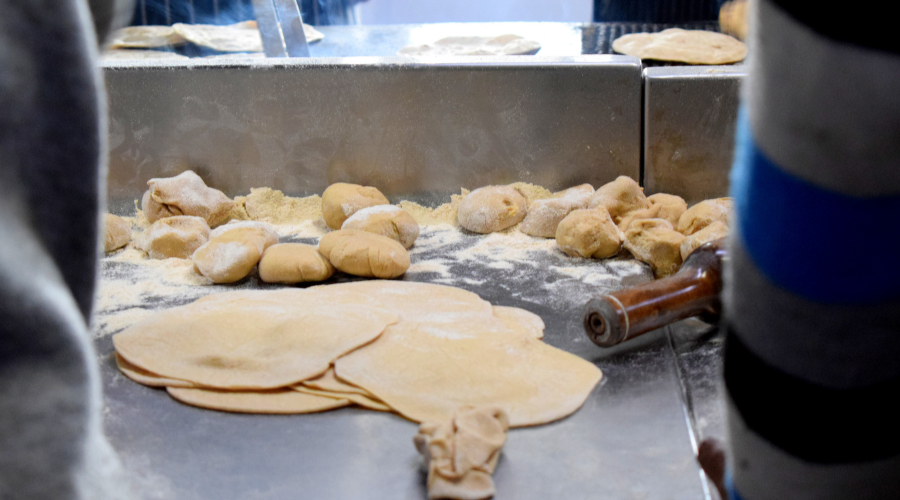Chandanki’s Community Kitchen: A Village In Gujarat That Cooks & Eats Together
Chandanki in Gujarat is home to a community kitchen that prepares meals for all members of the village, most of whom are aged. Villagers no longer prepare meals in their own homes.
“Everyone in our village is educated, and there is no dearth of money, but the problem is that very few people live here now,” said Sarpanch Poonam Chand Chunilal Patel of the Chandanki village in Gujarat. The village has a total population of 1,100 people, of which 300 live abroad, and 600-700 people have settled in Ahmedabad for better opportunities and jobs. This trend has left behind older people, most of whom are between 70 and 80 years old.
This demographic condition of the village led to a community kitchen initiative in Chandanki that encouraged villagers (mostly old) to come together during lunch and dinner to share a meal prepared by a hired chef. This keeps them away from the tedious task of cooking in their kitchens, encourages togetherness and unity among villagers, and helps them fight loneliness that comes with being away from their children.
“We don’t have a grocery store in our village, and due to the lack of a bus service, we have to walk 3 km to reach the nearby town of Becharaji whenever we need to buy vegetables or groceries,” added Patel.
Inside Chandanki’s Community Kitchen
The idea of developing this kitchen was initiated 14 years ago and was spearheaded by Rati Lal Somnath Patel, a resident of Chandanki, who still handles its functioning. Days in the kitchen begin with preparing a hearty and nutritious lunch for the villagers who congregate at 1.30 pm at the solar-powered community centre. “Each day, we serve bhakri, Gujarati daal, and sabzi along with chaach (buttermilk)—something without which Gujarati meals are incomplete,” said Patel.
Ankit Patel, a 45-year-old resident of Chandanki village, runs a share market business in Ahmedabad. However, his 78-year-old father, Kanti Bhai Ambalal Patel, continues to live in the village. “Knowing that others surround him and that someone will serve him two warm, well-made meals every day allows me to work without worrying about his well-being,” said Patel. He visits his father on holidays and festivals.
Every villager pays a monthly amount of INR 2,500 to be served two meals every day. “Our people are educated, and money is not a problem. Chandanki is home to over 40 doctors, a handful of chemical factories, and pharma company owners,” said the sarpanch.
Evenings are meant for diners to put forward their choices and eat what they relish the most. “Gujaratis are born foodies, and our cravings become even more instant when they grow older. Sometimes they want to eat pakode, aloo wada, dhokla, faafda (a Gujarati snack), or jalebi, and we understand that,” explained Patel.
They also ensure that beans and pulses are made at least twice weekly to meet their body’s protein requirements.

When I asked Patel about hygiene in Chandanki’s community kitchen, he mentioned that they prepare meals with as much care and love as they would for their kin. “Since we are also dealing with people who are aged and prone to diseases, hygiene tops our list of concerns,” added Patel.
“If we are ever adding cashew to our rice or slicing potatoes and a couple of them fall off, we don’t use them in the dish anymore,” he said.
“We are one big family, and every villager treats the community kitchen like their own. How they would make demands in their rasoi (kitchen) or recommend the cook to make dishes differently, they do it in our community kitchen too,” concluded Patel.
When I asked Ramesh Bhai Somnath Patel, a 76-year-old resident of the village, about the food prepared in the kitchen, he said, “Ghar jaisa khaana hota hai (food in Chandanki’s kitchen tastes exactly like the food prepared at home)”. His son moved to Australia three years ago, and his daughter is married in Ahmedabad. There is no one at his place to serve him meals. “Because of this kitchen, I don’t miss my children at all,” he laughed.